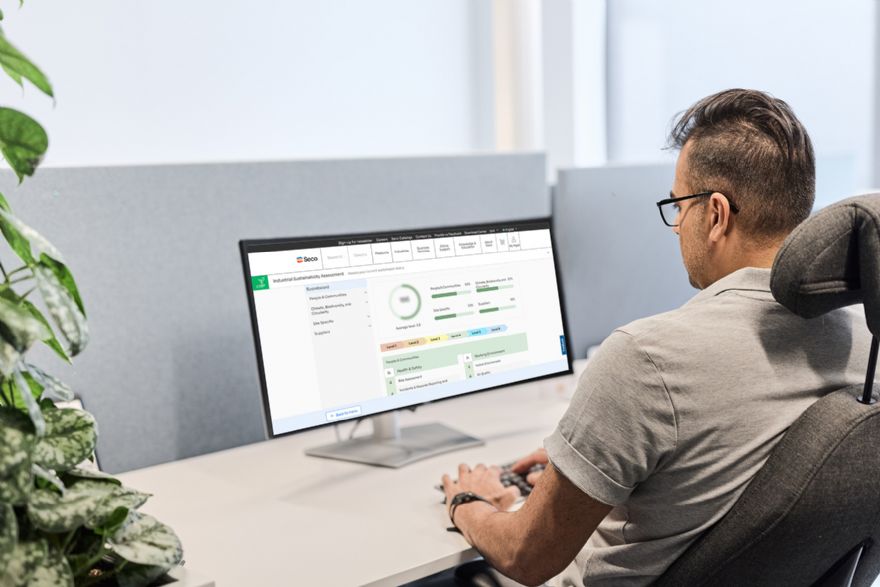 Seco
Seco, the cutting tools solutions specialist, has committed to achieving specific goals, including 90% circular waste by 2030 and ‘net zero’ operations by 2035 — plus enhanced supplier documentation, a reduced footprint, and a safe, healthy and inclusive workplace.
The company said: “While all these areas are vital, it can be challenging for local operational sites to understand the full picture of sustainability, to understand their current position, how they align with Seco’s global ambitions, and where to begin or focus their efforts.”
In 2021, Seco proposed its Industrial Sustainability Assessment, which was designed so that the company’s production units could assess their current sustainability level across all areas, thereby making it easier to ‘prioritise and identify actions toward effective and impactful improvements’.
Climate biodiversity and circularityThis assessment covers the key focus areas of: ‘people and communities’, which assesses a broad range of areas from traditional health and safety, to diversity, inclusion, and equity to key aspects of working environment and community involvement; ‘climate biodiversity and circularity’, which assesses areas related to resources, emissions and waste; how sustainability is integrated into production, the facilities, overall site building, infrastructure and how the site works with development; and how a site manages supplier responsibility at the local level.
Throughout 2021 and 2022, this way of working was co-developed with sites in Sweden and the Netherlands, and in 2023 the first version of the tool was rolled out in Excel for all production sites. Following user feedback, a project was launched to digitalise the tool in Seco’s MyPages, thereby creating ‘a more streamlined and user-friendly experience’.
The company added: “Since 2024, the Sustainability Assessment Tool has supported our sites tracking progress towards Seco’s global sustainability goals. It addresses key challenges such as understanding a site’s current sustainability performance, setting priorities for improvement, tracking progress over time, and enabling the sharing of best practices across sites. We have now initiated work to explore the potential for an externally adapted version of the tool for stakeholders and customers who may also find this approach relevant.”
Details can be obtained from Adrian Cox, head of global quality assurance: .